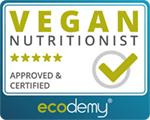Seeds are quite popular, but do you know how to get the most out of them? Some seeds need to be shredded to unfold their potential, their nutrients vary and - of course - depend on the serving size!
Botanical Basics
Seeds are a plant unit of reproduction and come in varying forms. They are loaded with nutrients and make up a big amount of our diet.
There are way more seeds than this that we eat on a regular basis, but I stuck to the most popular, ‘seed’-termed ones - but if you want to be botanically correct, foods like quinoa, rice, wheat, legumes, pine nuts and more are also seeds!
Usually, the quality of the soil the plants grew on impacts the amount of nutrients in the plant - and in the seeds.
The Benefits of Eating Seeds
Seeds are little superfoods, that contain so many nutrients for us. They are easy to incorporate in our everyday life, and can help with reaching the recommended nutrients.
A Closer Look on Seeds
-
Hemp Seeds are the seeds of the hemp plant, but contain nearly no THC. They contain over 30% oil and about 25% protein, with the essential fatty acids Omega-6 and Omega-3 in an optimal ratio, along with nutrients like Calcium, Magnesium, Iron, Potassium and Zinc1. They’ve been used in traditional medicine for thousands of years 2. Hemp seeds may have benefits regarding the risk of heart disease 3, Hypertension (high blood pressure) 4, skin disorders 5 and others.
-
Chia Seeds are rich fatty acids, such as omega-3, protein, fiber, calcium, zinc, B-vitamins and magnesium. Due to their high antioxidant content, they store well and have various benefits. Chia seeds may have benefits regarding e.g. cardiovascular diseases, obesity, cholesterol, blood pressure, and blood sugar levels 6,7. Even though Chia seeds are rich in omega-3, our bodies are inefficient in converting this plant-form ALA to DHA, which is very important for us. For that reason, it’s important to incorporate seafood, DHA-enriched foods, or DHA-supplements to our diet.
-
Flax Seeds are also rich in omega-3 fatty acids, and contain fiber, protein, magnesium, thiamine (vitamin B1), and other plant compounds. Flax seeds may have benefits regarding cardiovascular health 8, cholesterol levels, blood pressure, blood sugar, and more 9.
-
Pumpkin Seeds are rich in zinc, magnesium, iron and healthy fats. Due to their antioxidant content, they may have the potential to reduce inflammation. Their plant compounds may be able to reduce the risk for breast cancer in postmenopausal women 10. Pumpkin seeds may also help with urinary health 11.
-
Sunflower Seeds are rich in Vitamin E, Selenium and plant compounds. They may help reduce inflammation 12. Their plant compounds may also be able to reduce the risk for breast cancer in postmenopausal women 10.
-
Sesame Seeds are rich in fiber. They may have the potential to improve blood pressure 13, and due to their anti-inflammatory, anti-metastatic etc, also anti-cancer properties 14.
Nutrient Breakdown
Nutrients in 1 Serving Size
10g of Hemp seeds provide (in % of RDI)
- Omega-3: 84%
- Thiamine (B1): 11%
- Magnesium: 22%
- Manganese: 42%
- Zinc: 12%
10g of Chia seeds provide (in % of RDI)
- Omega-3: 162%
- Pyridoxine (B6): 10%
- Vitamin K: 78%
- Selenium: 10%
- Iron: 9%
10g of Flax seeds provide (in % of RDI)
- Omega-3: 207%
- Thiamine (B1): 14%
- Magnesium: 12%
- Copper: 13%
30g of Pumpkin seeds provide (in % of RDI)
- Fiber: 22%
- Vitamin E: 9%
- Magnesium: 25%
- Zinc: 38%
- Iron: 5%
20g of Sunflower seeds provide (in % of RDI)
- Thiamine (B1): 26%
- Pyridoxine (B6): 20%
- Folate: 11%
- Vitamin E: 46%
- Magnesium: 20%
- Selenium: 19%
- Zinc: 12%
- Iron: 5%
10g of Sesame seeds (unhulled) provide (in % of RDI)
- Iron: 8%
- Calcium: 9%
- Zinc: 9%
- Magnesium: 11%
- Copper: 45%
source: cronometer/NCCDB
How to Incorporate Seeds into Your Diet
-
Hemp Seeds are a great topping for salad, sandwiches, buddha bowls, burritos, pasta, smoothie bowls and so much more! The hulled version is soft, easy to chew and has a subtle flavor.
-
Chia Seeds are great for chia pudding, they thicken liquids, can be used as an egg-replacement and as an ingredient for smoothies, smoothiebowls, on salads, in oatmeal, granola and more.
-
Flax Seeds are a great addition to smoothies, smoothiebowls, oatmeal, granola or egg-replacement for baking. Make sure to grind them though, as this will allow the nutrients to absorb a lot better. You can buy pre-grind ones, or grind them at home in a blender.
-
Pumpkin Seeds are a flavorful snack on their own, to add to homemade granola, sandwich spread ingredient, or as a crunchy topping for salads and buddha bowls.
-
Sunflower Seeds are a great addition to homemade sandwich spreads, as a salad topping or baking ingredient!
-
Sesame Seeds can be roasted in a pan to expand their flavor, and added to all different kinds of dishes (e.g. steamed vegetables, rice, buddha bowls). But don’t forget about tahini: it’s made out of sesame seeds, can be used to make hummus, salad dressings or as an ingredient to make dishes creamier.
Final Words
As you can see, seeds are little powerhouses for us! It’s a good idea to include some sort of seeds in our everyday life, so we can get the benefits!
Please let me know how you like informational blog posts like this. I always appreciate some feedback ![]()
References
-
Mihoc, Marcela et al. “Nutritive quality of romanian hemp varieties (Cannabis sativa L.) with special focus on oil and metal contents of seeds.” Chemistry Central journal vol. 6,1 122. 23 Oct. 2012, doi:10.1186/1752-153X-6-122 https://www.ncbi.nlm.nih.gov/pubmed/23088580/. ↩
-
Callaway, J.C. Euphytica (2004) 140: 65. https://doi.org/10.1007/s10681-004-4811-6 ↩
-
Al-Khalifa u. a., „Effect of Dietary Hempseed Intake on Cardiac Ischemia-Reperfusion Injury“. https://www.ncbi.nlm.nih.gov/pubmed/17122327 ↩
-
Girgih u. a., „Preventive and Treatment Effects of a Hemp Seed (Cannabis Sativa L.) Meal Protein Hydrolysate against High Blood Pressure in Spontaneously Hypertensive Rats“. https://www.ncbi.nlm.nih.gov/pubmed/24292743 ↩
-
Callaway u. a., „Efficacy of Dietary Hempseed Oil in Patients with Atopic Dermatitis“. https://www.ncbi.nlm.nih.gov/pubmed/16019622 ↩
-
Marcinek und Krejpcio, „Chia Seeds (Salvia Hispanica)“. https://www.ncbi.nlm.nih.gov/pubmed/28646829 ↩
-
Kulczyński u. a., „The Chemical Composition and Nutritional Value of Chia Seeds—Current State of Knowledge“. https://www.ncbi.nlm.nih.gov/pmc/articles/PMC6627181/ ↩
-
Parikh, Netticadan, und Pierce, „Flaxseed“. https://www.ncbi.nlm.nih.gov/pubmed/29101172 ↩
-
Parikh und Pierce, „Dietary Flaxseed“. https://www.ncbi.nlm.nih.gov/pubmed/30562057 ↩
-
Zaineddin u. a., „The Association between Dietary Lignans, Phytoestrogen-Rich Foods, and Fiber Intake and Postmenopausal Breast Cancer Risk“. https://www.ncbi.nlm.nih.gov/pubmed/22591208 ↩ ↩2
-
Nishimura u. a., „Pumpkin Seed Oil Extracted From Cucurbita maxima Improves Urinary Disorder in Human Overactive Bladder“. https://www.ncbi.nlm.nih.gov/pmc/articles/PMC4032845/ ↩
-
Jiang u. a., „Nut and Seed Consumption and Inflammatory Markers in the Multi-Ethnic Study of Atherosclerosis“. https://www.ncbi.nlm.nih.gov/pubmed/16357111 ↩
-
Khosravi-Boroujeni u. a., „Can Sesame Consumption Improve Blood Pressure?“ https://www.ncbi.nlm.nih.gov/pubmed/28387047 ↩
-
Majdalawieh, Massri, und Nasrallah, „A Comprehensive Review on the Anti-Cancer Properties and Mechanisms of Action of Sesamin, a Lignan in Sesame Seeds (Sesamum Indicum)“. https://www.ncbi.nlm.nih.gov/pubmed/29032105 ↩



